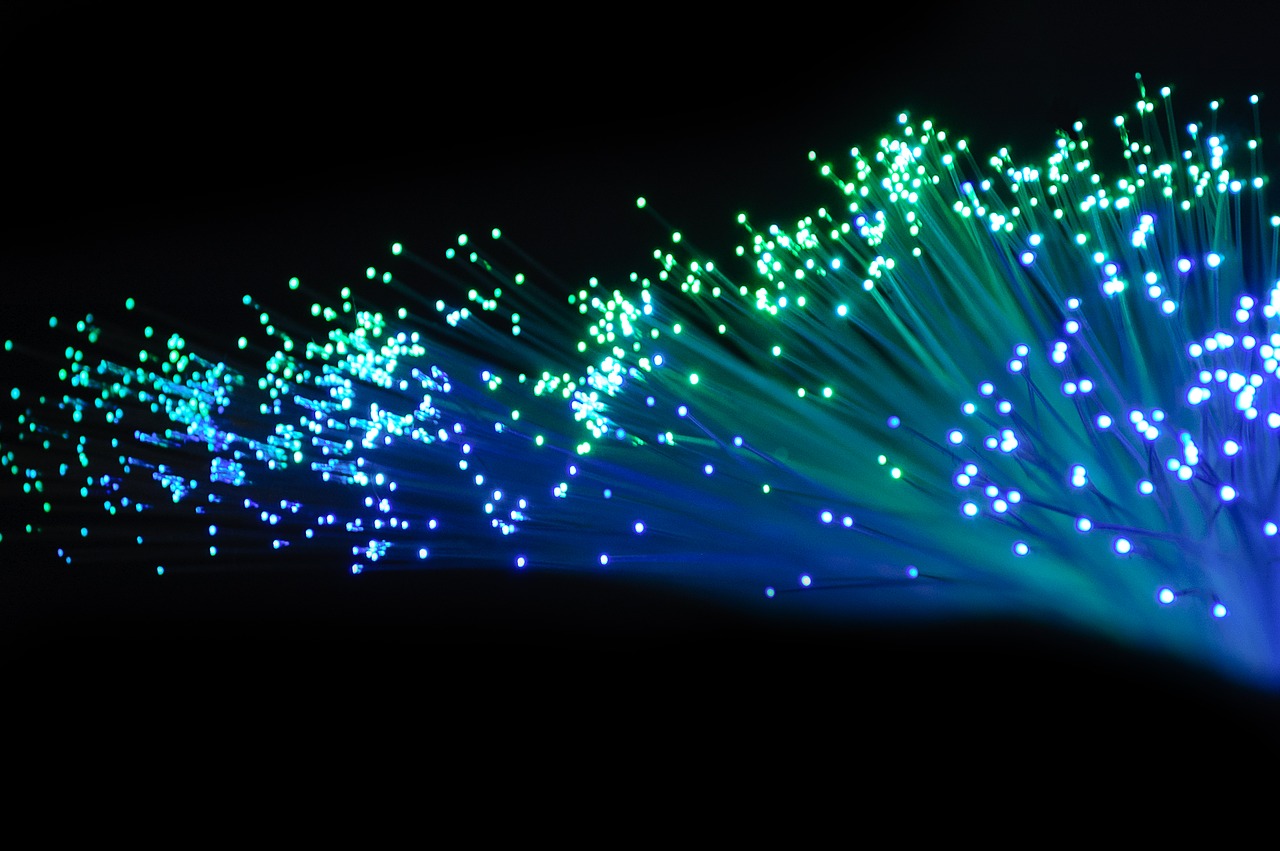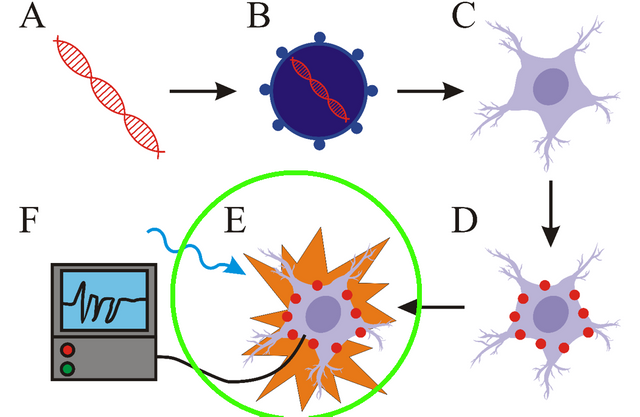Light delivery and stimulation in Optogenetics
Hi guys! Let’s continue in Optogenetics series. Last time we talked about gene expression and gene delivery in optogenetics. Today I would like to show you how is actually light transported in the brain. You probably guessed it – optic fibres! But that is not all, proper activation of neurons requires also the right intensity, wavelength and frequency of light stimulation. So, it is really not that simple – just put a optic fibre here and there and you are ready to go. No no.
Read on and see what I am talking about! :)
Recapitulation
Just in case you did not read my previous articles about optogenetics, here is a quick recapitulation. Optogenetics is a relatively new biological technique that uses genetics and optics to precisely control activity of neurons in space and time. Meaning: They have these GMO neurons and shine light on them and then they do something (activate or inactivate). This something is due to the presence of light-sensitive proteins termed opsins in the plasmatic membrane of neurons. If you are interested in this topic, then check bottom of the article where you can find links to previous parts of this series.
Light – fundamental tool in biology
Light is one of the fundamental tools in biology. Microscopes, fluorescent dyes or UV disinfection- all of these technologies use light. Microbial opsins can (due to their fast kinetics) change the membrane potential of cell in matter of seconds (Read HERE how). Whereas spatial specificity is accomplished via the usage of cell-specific vectors and gene constructs (more info HERE), the temporal precision of optogenetics is maintained with light. There are three fundamental requirements that need to be maintained in order to successfully use optogenetics to stimulate activity of cells.
Firstly, the wavelength of used light has to correlate with the excitatory spectrum of opsin. This means that the opsin will change its conformation only when correct wavelength is applied and thus, only then changes the membrane potential of cell.
Secondly, light has to be transported into the site of expression of opsin. Yeah, this basically is what it is. You need to somehow manage to get your light source into rodent brain. Easy peasy, right?
And lastly, the right frequency of light pulses has to be applied. This means that in order to achieve successful production of artificial neuronal signals you need to activate opsins with correct frequency. In neurons it is all about frequency of their spiking. What the hell is spiking right? Well, it is a term used to describe the change in membrane potential in neurons when using for example some measurement technique such as patch clamp. This technique can for example measure the change in current or voltage, meaning that when there is change in membrane potential this will be measured in a form of signal. And this signal is usually robust but rapid and is typically in the shape of spike. Hence the name. Will cover more in the next episode! ;)
How to get the light where I want it
There are generally two options for light sources- lasers and LEDs. The choice is highly dependent on available finances and the method of usage. Lasers work well when coupled with fibre optics for stimulation in vivo (meaning in living animals), but they are expensive and fragile. On the other hand, LEDs are cheaper and more durable, but they are inferior in power and also emit excessive heat that may flaw results of experimentation.
To optogenetically stimulate organisms in vivo, the integration of laser and optical fibre is the most common strategy. Similarly, as electric wires transport electricity from one place to another, so does optical fibre transport light. This fibre is inserted into the skull of lab animals, mainly rodents, so specific parts could be illuminated. New alternative to optical fibres are wireless devices that use LEDs – but still, they are quite bulky.
I was present at one such insertion of optic fibre into mouse brain. The mouse is under narcosis and anaesthetics are applied. Then the skin on the head is cut (they have lots of skin and at this part it did not look good) and the skull is cleaned from blood. Then drill is taken and hole in the skull is created. Through this hole optic fibre is inserted into desired region of brain. In order to know precise localization of insertion specialize equipment capable of precise measurements is used. That way you are aware of the movement of optic fibre in all three axes. Once the procedure is done dental cement is usually applied on the skull and skin. This seals off the brain and really prevents infection. And it is easy and cheap. That was quite interesting for me, that after this surgery no antibiotics were administrated to the mice, even though the environment wasn’t sterile at all. I was told that mice have really good immunity so there is no need for this.
Concluding remarks
So, guys, I hope you all did learn something new today. Mainly that even though it might seem easy, there is more to it than sticking optic fibre into brain. Next time I will try to explain various technologies used to decipher results of optogenetic stimulation.
Have a great day!
Previous parts of Optogenetics series:
Part 1 – Introduction
Part 2 – History of Optogenetics
Part 3 – Opsins – light sensitive proteins
Part 4 – Gene expression and delivery in Optogenetics
References
https://www.ncbi.nlm.nih.gov/pmc/articles/PMC4756725/
https://www.ncbi.nlm.nih.gov/pubmed/17873414
https://www.ncbi.nlm.nih.gov/pubmed/16116447


@jepper : Nice article. I once saw these kinds of optogenetic experimental setup (from Dr. Upinder Bhalla's lab) in NCBS, Bangalore. It was really cool. :) Resteeming
Wow, thank you! :)
And yes, I used to read a lot about this technique, but seeing it with my own eyes was something completly different.
This sounds like an amazing field! I wonder all the implications this might have in the future. To me it also sounds like a great alternative to DBS (deep brain stimulation)
Exactly! Well, electricity is quite hard to control in terms of spreading - it spreads everywhere. With optogenetics you could really stimulate just the areas you want to. But unfortunately it is years and years from application on humans.
Ah that's a bummer. Still the concept is there and perhaps we could see PNS applications before we go CNS? Maybe a cool way to control future bionic limbs :p (I want to be a cyborg when I grow up ;) )
I think we have the same aspirations :D :D
The main problem lies in the need of expression of light-sensitive proteins in target cells. And creating GMO humans is generally not very welcome :D
However, interesting thing is, that some of these light-sensitive proteins can be also activated with infrared or near-infrared light. These wavelengths have really great penetration ability and thus neuronal stimulation could be achieved without need of optic-fibres or LEDs. So maybe in distant future we could activate certain brain regions without any invasive drilling or stuff.